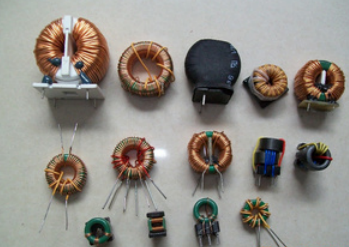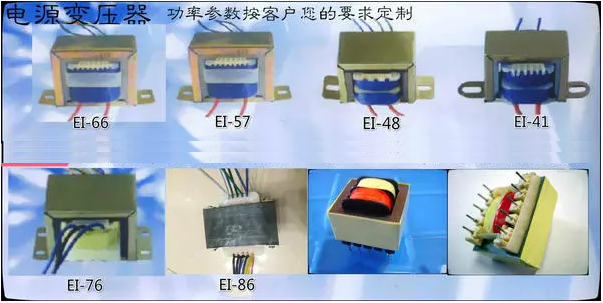NEWS
Understanding the Impact of High and Low Frequency Transformers on Power Supply Efficiency
Release time:
Feb 08,2025
Understanding the Impact of High and Low Frequency Transformers on Power Supply Efficiency
Table of Contents
1. Introduction to Transformers and Power Supply Efficiency
2. The Role of Frequency in Transformer Operation
3. High Frequency Transformers: Features and Benefits
4. Low Frequency Transformers: Characteristics and Uses
5. Comparing High and Low Frequency Transformers
6. How Transformers Impact Power Supply Efficiency
6.1 Energy Losses in Transformers
6.2 Efficiency Metrics in Power Supplies
7. Applications of High and Low Frequency Transformers
8. Future Trends in Transformer Technology
9. Frequently Asked Questions (FAQs)
10. Conclusion
1. Introduction to Transformers and Power Supply Efficiency
Transformers are essential components in electrical systems, facilitating the transfer of electrical energy between circuits. They function by altering voltage levels while maintaining power efficiency. Understanding how different types of transformers, specifically high and low frequency transformers, influence power supply efficiency is crucial for engineers, manufacturers, and electrical professionals.
2. The Role of Frequency in Transformer Operation
Frequency plays a pivotal role in how transformers operate. High frequency transformers typically operate at frequencies above 1 kHz, while low frequency transformers work at standard power line frequencies, such as 50 or 60 Hz. The frequency affects the design, functionality, and application of transformers, ultimately influencing their efficiency and performance in power supply systems.
3. High Frequency Transformers: Features and Benefits
High frequency transformers are designed for efficient energy transfer at elevated frequencies. Key features include:
- **Compact Size**: Due to the reduced core size required for higher frequencies, these transformers occupy less physical space.
- **Lower Core Losses**: At higher frequencies, core losses (hysteresis and eddy current losses) decrease, enhancing overall efficiency.
- **Enhanced Performance**: High frequency transformers excel in applications requiring rapid switching and minimal energy loss.
The benefits of high frequency transformers extend into various sectors, including telecommunications, power electronics, and renewable energy systems.
4. Low Frequency Transformers: Characteristics and Uses
Low frequency transformers are more traditional in design, operating at standard mains frequencies. Their characteristics include:
- **Robustness**: These transformers are generally more robust and can handle larger currents.
- **Simplicity**: The design tends to be simpler, making them easier to manufacture and maintain.
- **Cost-Effectiveness**: Lower frequency transformers are often less expensive than their high frequency counterparts.
Common applications of low frequency transformers include power distribution, industrial machinery, and consumer electronics.
5. Comparing High and Low Frequency Transformers
When comparing high and low frequency transformers, several factors come into play:
- **Efficiency**: High frequency transformers generally offer superior efficiency due to lower core losses.
- **Size and Weight**: High frequency models are typically smaller and lighter, which is advantageous in space-constrained applications.
- **Cost**: Low frequency transformers may have a lower upfront cost, but their efficiency may be compromised in high-demand applications.
Understanding these differences helps in selecting the right transformer for specific applications, ultimately impacting overall power supply efficiency.
6. How Transformers Impact Power Supply Efficiency
Transformers play a vital role in determining the efficiency of power supply systems.
6.1 Energy Losses in Transformers
Energy losses in transformers primarily occur due to:
- **Copper Losses**: Resistance in the winding leads to energy loss as heat.
- **Core Losses**: Energy is lost as the magnetic core material undergoes hysteresis and eddy currents.
Minimizing these losses is essential for improving power supply efficiency.
6.2 Efficiency Metrics in Power Supplies
Efficiency metrics, such as the efficiency rating and load factor, help assess transformer performance. High efficiency transformers can significantly enhance the overall efficiency of power supply systems, resulting in lower operational costs and reduced energy waste.
7. Applications of High and Low Frequency Transformers
Both high and low frequency transformers find applications across diverse industries. High frequency transformers are often utilized in:
- **Switching Power Supplies**: Vital for compact electronics.
- **RF Amplifiers**: Essential for telecommunications and broadcasting.
Low frequency transformers are prominent in:
- **Power Distribution Networks**: Ensuring reliable energy transfer.
- **Industrial Equipment**: Supporting heavy machinery operations.
The selection of transformer type directly influences the efficiency of these applications.
8. Future Trends in Transformer Technology
As technology advances, several trends are emerging in transformer design and application:
- **Smart Transformers**: Incorporating digital monitoring for improved performance management.
- **Sustainable Materials**: The shift toward eco-friendly core materials to minimize environmental impact.
- **Increased Efficiency Standards**: Regulatory measures promoting higher efficiency ratings in transformer design.
These trends indicate a growing focus on enhancing power supply efficiency while meeting modern technological demands.
9. Frequently Asked Questions (FAQs)
**Q1: What is the primary difference between high and low frequency transformers?**
A: The primary difference lies in their operational frequencies, affecting their design, efficiency, and applications.
**Q2: How do I determine the efficiency of a transformer?**
A: Efficiency can be determined by measuring output power versus input power, often expressed as a percentage.
**Q3: Can I use a high frequency transformer in a low frequency application?**
A: While technically possible, it may not be optimal due to potential inefficiencies.
**Q4: What are the common materials used in transformer cores?**
A: Common materials include silicon steel and ferrite, chosen for their magnetic properties.
**Q5: How do transformers affect energy costs?**
A: Efficient transformers reduce energy losses, leading to lower operational costs and improved energy savings over time.
10. Conclusion
Understanding how high and low frequency transformers impact power supply efficiency is critical for optimizing electrical systems. By carefully considering the characteristics and applications of each type, professionals can make informed decisions that enhance efficiency and performance. As technology evolves, staying abreast of trends in transformer design will be essential for achieving sustainability and efficiency in modern power systems.


















